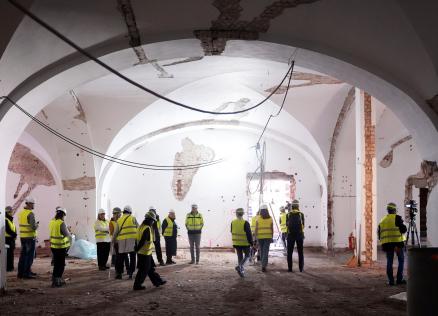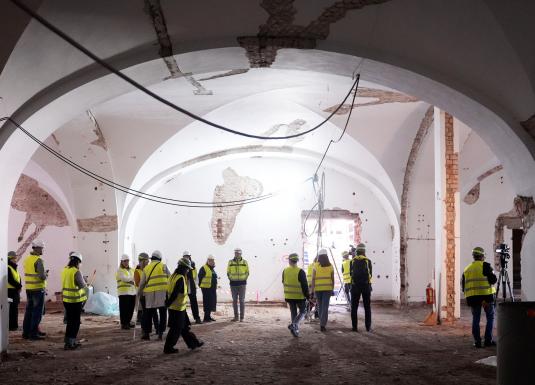Exhibition Hall ARSENĀLS to Be Restored with Funding from the European Regional Development Fund Attracted by the Ministry of Culture
With funding from the European Regional Development Fund (ERDF) attracted by the Ministry of Culture (MoC), five unique state-significant cultural monuments located in the UNESCO World Heritage Site – the Historic Centre of Riga will be preserved and developed over the coming years: the Exhibition Hall “Arsenāls,” the Great Guild Hall, the infrastructure of Vaļņu Street, Theatre Square and adjoining streets, the Daugava Gate, as well as the creation of new Latvian National Museum of History exhibitions in Riga Castle.
With the EUR 36.7 million investment from the European Regional Development Fund (ERDF), these sites will be restored and developed to enhance their accessibility, expand innovative uses that contribute to improving the quality of life, and strengthen local communities.
"Cultural heritage is a significant value for Latvia. Therefore, it is especially important that we can find resources not only for its restoration but also to ensure that, once the projects are completed, the entire Latvian society and the cultural sector as a whole benefit. What matters most is that while implementing these projects, we preserve the unique values of all five sites included in the UNESCO World Heritage List," said Minister of Culture Agnese Lāce at the official opening of the programme.
Signe Groza, Economic Adviser at the European Commission Representation in Latvia, noted: “European Union funding provides an opportunity not only to restore historic buildings but also to develop new cultural services and tourism potential. It is important that cultural sites are not only aesthetically pleasing and accessible but also contribute to local economic growth by attracting visitors and creating new jobs. In addition to ERDF funding for these projects, the Recovery and Resilience Facility will provide resources for improving the energy efficiency of heritage buildings. By preserving and restoring Latvia’s cultural heritage, we keep our shared history alive while upholding the values of both Latvia and Europe.”
Anita Krūmiņa, Director of the Central Finance and Contracting Agency, added: “Projects involving the restoration of cultural heritage are always special and cannot be carried out without a sense of mission. They require care, respect, precision, and patience. However, once the major work is completed, these projects are truly noticed, recognised, and appreciated by society — by the people who will enjoy the revitalised environment and the new opportunities it creates.”
Māra Lāce, Director of the Latvian National Museum of Art, emphasised: “The renovation of the Exhibition Hall Arsenāls will directly embody the idea and purpose of the ERDF programme. During the reconstruction, the building will become more accessible and will be used to improve the quality of life in society, making a significant contribution to the development of the visual arts infrastructure in Riga and Latvia. I dare say that the restored building – where care for historical heritage will coexist dynamically with the creative energy, vitality, and contemporaneity of artistic innovation – will benefit artists, local communities, visitors, and the public at large. The expectations among artists are very high! The museum’s team has already begun developing the programme that will start operating at the end of 2027.”
Jeļena Gavrilova, Member of the Board of State Real Estate JSC (VNĪ), commented: “VNĪ, in successful cooperation with the European Union funds support programme, implements important cultural heritage conservation projects that are carefully planned and executed in line with established deadlines and budgets. The projects at the Great Guild, Arsenāls, and Daugava Gate are good examples of effective resource management where timeliness and cost-efficiency are priorities. For instance, the Daugava Gate and forecourt redevelopment project at Riga Castle includes improved rainwater drainage, preservation of historic castle walls, and modern façade lighting — making the castle surroundings more accessible and attractive for all visitors while reinforcing its role as a key cultural centre.”
*The Ministry of Culture is the responsible authority for the EU Funds 2021–2027 programming period under the ERDF Specific Objective 5.1.1 “Promoting integrated social, economic and environmental development and cultural heritage, tourism, and security enhancement in urban functional areas”, within the programme 5.1.1.5 “Restoration of unique cultural heritage of European importance to improve accessibility and develop cultural services.”
With the EUR 36.7 million ERDF investment, these projects aim to enhance accessibility, encourage innovative use, and strengthen community engagement, thereby contributing to the overall improvement of society’s quality of life.








